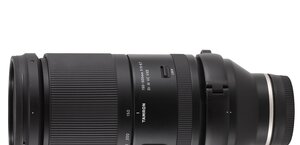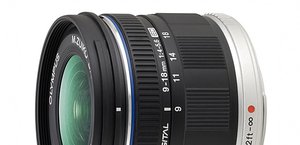Nikon Nikkor AF-P DX 10-20 mm f/4.5-5.6G VR
5. Chromatic and spherical aberration
Chromatic aberration
While looking at the optical diagram of the Nikkor 10-20 mm without any low dispersion elements we were wondering whether their absence would influence the chromatic aberration correction. Glancing at the photos below you can say that there are no serious problems concerning the longitudinal kind. You can notice just slight colouring but it shouldn’t be bothersome in real life photos. Mind you, it wasn’t difficult to achieve that much – with such parameters the depth of field is considerably deep so it is difficult to find any out-of-focus areas in which you can spot any colouring at all.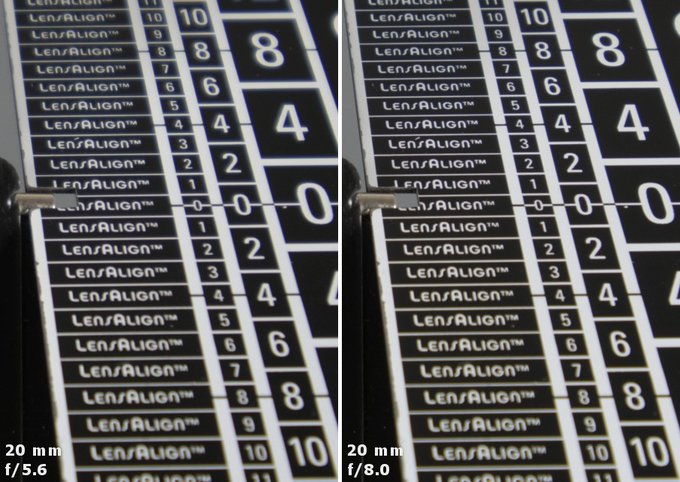 |
The lateral chromatic aberration was a far greater challenge and looking at the graph below you have to admit the tested Nikkor has a distinct slip-up in that category.
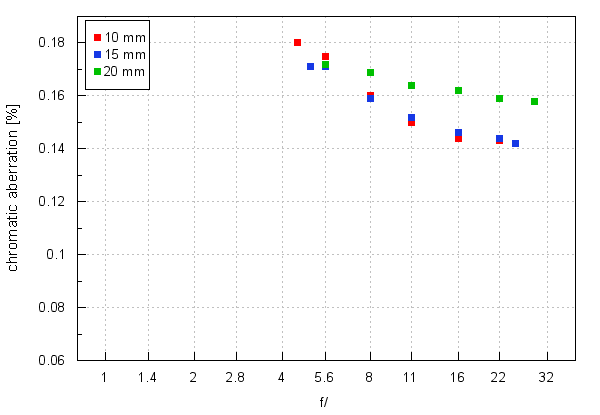
Please Support UsIf you enjoy our reviews and articles, and you want us to continue our work please, support our website by donating through PayPal. The funds are going to be used for paying our editorial team, renting servers, and equipping our testing studio; only that way we will be able to continue providing you interesting content for free. |
- - - - - - - - - - - - - - - - - - - - - - - - - - - - - - - - - - - - - - - - - - - - - - - -
At the maximum relative aperture the aberration level is similar at every focal length, amounting to a high level of 0.17-0.18%. Then it drops - faster at 10-15 mm focal lengths, slower at 20 mm. Still it remains a huge limiter of the resolution of the lens, contributing to weaker results described in the previous chapter. What’s more, even quite significant stopping down cannot reduce the level of that aberration to medium values. You deal with high levels everywhere.
In order to defend the cheap 10-20 mm model a bit we might add that the more expensive Nikkor 10-24 mm at 10 mm didn’t fare better at all; its aberration level was lower only at the longer end of the focal spectrum. The Canon 10-18 mm IS STM, for a change, performed similarly to the Nikkor 10-20 mm but its values were about 0.03% lower.
| NikonáD500, RAW, 10ámm, f/4.5 | NikonáD500, RAW, 15ámm, f/16.0 |
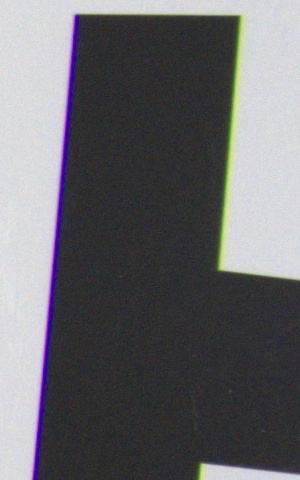
|
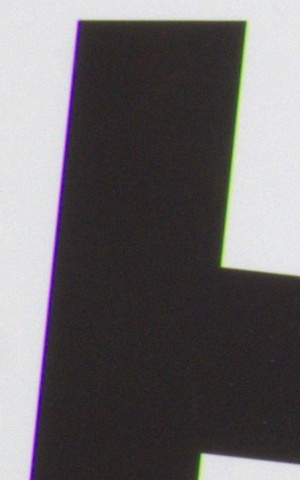
|
Spherical aberration
First photos of this chapter seem to indicate that spherical aberration is not ideally corrected. Of course, with such a significant depth of field as offered by the tested lens it would be difficult to draw any biding conclusions but looking at the photos it seems that, after passing from f/5.6 to f/8.0, the image before the focus didn’t change much (please compare the number 10 in the upper right-hand corner), while the image generated after the focus got sharpened distinctly, an effect easy to notice close to the number 10 in the upper part of the crop. It means you deal here with a certain level of ‘focus shift’ and spherical aberration is not properly corrected.Unfortunately, the parameters of the lens and the significant depth of field, stemming from them, didn’t allow us to produce circles of a sensible size before and after the focus so we weren’t able to perform another spherical aberration test.




